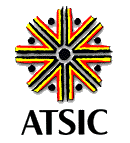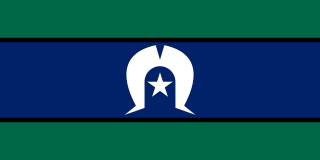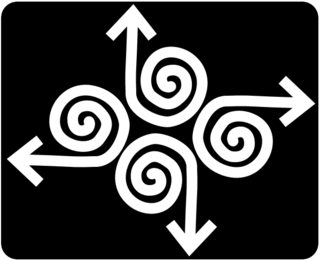Related Research Articles

The Aboriginal and Torres Strait Islander Commission (ATSIC) (1990–2005) was the Australian Government body through which Aboriginal Australians and Torres Strait Islanders were formally involved in the processes of government affecting their lives, established under the Hawke government in 1990. A number of Indigenous programs and organisations fell under the overall umbrella of ATSIC.
The Central Australian Aboriginal Media Association (CAAMA) is an organisation founded in 1980 to expose Aboriginal music and culture to the rest of Australia. It started with 8KIN-FM, the first Aboriginal radio station in the country. Based in Alice Springs, the organisation is particularly focused on the involvement of the local Indigenous community in its production. CAAMA is involved in radio, television and recorded music.
The Community Broadcasting Association of Australia (CBAA) is the peak body and the national representative organisation for community radio and television stations in Australia. The CBAA provide leadership, advocacy and support for members to actively provide independent broadcasting services and to build and strengthen local communities. The organisation provides advice and support to community broadcasters regarding a variety of issues.
Indigenous Community Television (ICTV) is an Australian free-to-view digital television channel on the Viewer Access Satellite Television service. It broadcasts television programs produced by, and for, Indigenous Australians in remote communities. The channel is owned by membership-based company Indigenous Community Television Limited. Although ICTV is a community television channel by name and content, it broadcasts using an open-narrowcast licence instead of a standard community television licence.

The Torres Strait Islander Flag is an official flag of Australia, and is the flag that represents Torres Strait Islander people. It was designed in 1992 by Bernard Namok. It won a local competition held by the Islands Coordinating Council, and was recognised by the Aboriginal and Torres Strait Islander Commission in June 1992.

The Australian National Aboriginal and Torres Strait Islander Education Policy (AEP) is a national policy adopted by the Government of Australia by each State and Territory government. The policy was first introduced in 1989 and is the foundation of education programs for all Indigenous Australians.
Indigenous Australian self-determination, also known as Aboriginal Australian self-determination, is the power relating to self-governance by Aboriginal and Torres Strait Islander peoples in Australia. It is the right of Aboriginal and Torres Strait Islander peoples to determine their own political status and pursue their own economic, social and cultural interests. Self-determination asserts that Aboriginal and Torres Strait Islander peoples should direct and implement Aboriginal and Torres Strait Islander policy formulation and provision of services. Self-determination encompasses both Aboriginal land rights and self-governance, and may also be supported by a treaty between a government and an Indigenous group in Australia.
First Nations Radio, formerly, Radio Larrakia, is an Aboriginal Australian community radio station in Darwin, Northern Territory with a broadcast range that reaches Jabiru.

National Indigenous Television (NITV) is an Australian free-to-air television channel that broadcasts programming produced and presented largely by Aboriginal and Torres Strait Islander people. It includes the half-hourly nightly NITV News, with programming including other news and current affairs programmes, sports coverage, entertainment for children and adults, films and documentaries covering a range of topics. Its primary audience is Indigenous Australians, but many non-Indigenous people tune in to learn more about the history of and issues affecting the country's First Nations peoples.
The National Indigenous Radio Service (NIRS) is a satellite program feed available in Australia to Indigenous and non-Indigenous community radio stations. NIRS provides targeted and specialist programming for and by Australia's Aboriginal and Torres Strait Islander broadcasters. From its base in Brisbane NIRS provides a feed of programs and music supplied by a number of contributing stations including Koori Radio, 4AAA and BBM.
Koori Radio, formerly Radio Redfern, is a community radio station based in Redfern broadcasting to Sydney on a citywide licence. It is part of the Gadigal Information Service (GIS) and is the only radio station in Sydney providing full-time broadcasting to the Aboriginal and Torres Strait Islander community.

The Rural Health Education Foundation was an Australian provider of television-based health education for doctors, pharmacists, nurses and allied health professionals.
The National Rural Health Alliance (NRHA) is Australia's peak non-government organisation for rural and remote health.

The National Congress of Australia's First Peoples was the national representative body for Aboriginal and Torres Strait Islander Australians. Planning to establish National Congress was undertaken by a committee established by then Social Justice Commissioner of the Australian Human Rights Commission, Tom Calma. The organisation was announced in November 2009. Its first elected co-chairs were Jody Broun and Les Malezer. Subsequent chairs included Kirstie Parker, Jackie Huggins and Rod Little. It was registered as a charity in December 2012, but in June 2019 went into voluntary administration.
The Closing the Gap framework is an Australian government strategy that aims to reduce disadvantage among Aboriginal and Torres Strait Islander people, based on seven targets. From adoption in 2008, after meetings with the Close the Gap social justice campaign, until 2018, the federal and state and territory governments worked together via the Council of Australian Governments (COAG) on the framework, with the Department of the Prime Minister and Cabinet producing a report at the end of each year analysing progress on each of its seven targets.

The Federal Council for the Advancement of Aborigines and Torres Strait Islanders (FCAATSI), founded in Adelaide, South Australia, as the Federal Council for Aboriginal Advancement (FCAA) on 16 February 1958, was a civil rights organisation which campaigned for the welfare of Aboriginal Australians and Torres Strait Islanders, and the first national body representing Aboriginal interests. It was influential in lobbying in favour of the 1967 Referendum on Aboriginal Australians. It was renamed to National Aboriginal and Islander Liberation Movement (NAILM) in the early to mid 1970s, before disbanding in 1978.
First Nations Media Australia (FNMA), formerly Indigenous Remote Communications Association (IRCA), is the national peak body for Aboriginal Australians and Torres Strait Islander not-for-profit broadcasting, media and communications.
Priscilla Collins is a prominent Aboriginal leader, advocate and television producer. Collins is currently the Chief Executive Officer of the North Australian Aboriginal Justice Agency (NAAJA), the largest law firm in the Northern Territory of Australia.
Kirstie Parker is a Yuwallarai journalist, policy administrator and Aboriginal Australian activist. From 2013 to 2015 she served as the co-chair of the National Congress of Australia's First Peoples and during her tenure pressed for policies that allowed Aboriginal and Torres Strait Islander Australians to gain the ability for self-determination.
The Indigenous Voice to Parliament is the proposed new advisory group containing separately elected Aboriginal and Torres Strait Islander people, perpetually enshrined in the Constitution of Australia, which would "have a responsibility and right to advise the Australian Parliament and Government on national matters of significance to Aboriginal and Torres Strait Islander peoples".
References
- 1 2 3 4 5 Meadows, Michael (20 August 2016). "Australian Indigenous Communications Association". AustLit. Retrieved 13 November 2021.
Appears in: A Companion to the Australian Media: A, reference companion section pg. 56
- 1 2 3 "About AICA". AICA membership. Retrieved 13 November 2021.
- ↑ "Boost for Indigenous Broadcasting" (PDF). Department of the Environment, Water, Heritage and the Arts (Australia) (DEWHA). 20 March 2008. Archived from the original (PDF) on 7 September 2008. Retrieved 18 July 2008.